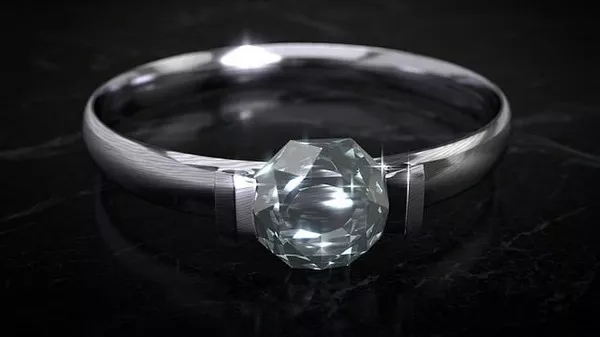Investing in silver is a strategic move for diversifying an investment portfolio, protecting against inflation, and securing financial stability in uncertain times. This precious metal has a long history of being a store of value and a medium of exchange. With various ways to buy silver, ranging from physical bullion to digital assets, it’s crucial to understand the best strategies to maximize your investment. This comprehensive guide will explore the most effective ways to buy silver, considering the pros and cons of each method, and provide insights to help you make informed decisions.
Understanding the Market
Before delving into the different methods of purchasing silver, it’s essential to grasp the dynamics of the silver market. Silver, like gold, is traded on commodities markets and its price is influenced by factors such as supply and demand, industrial use, geopolitical stability, and investor sentiment. Unlike gold, silver has significant industrial applications, which means its price can also be affected by changes in technology and manufacturing trends.
Physical Silver
1. Silver Bullion Coins:
Silver bullion coins are a popular choice for investors. These coins are minted by government authorities and have a guaranteed purity and weight. Popular silver coins include the American Silver Eagle, Canadian Silver Maple Leaf, and the Austrian Silver Philharmonic.
Pros:
- Recognized and trusted globally.
- Easy to buy and sell.
- Legal tender in their country of issue.
- Typically come with a lower premium compared to silver bars.
Cons:
- Higher premiums than other forms of silver, especially for collectible coins.
- Storage and insurance costs.
2. Silver Bars:
Silver bars are available in various sizes, ranging from small one-ounce bars to large 100-ounce bars. They are often produced by private mints and can be a cost-effective way to purchase silver in bulk.
Pros:
- Lower premiums compared to coins.
- Suitable for large investments.
- Easy to store in secure facilities.
Cons:
- Less liquid than coins.
- Storage and insurance costs.
- Potential difficulty in verifying authenticity.
3. Junk Silver:
Junk silver refers to pre-1965 U.S. coins that contain 90% silver, such as dimes, quarters, and half-dollars. These coins are valued for their silver content rather than their collectible value.
Pros:
- Lower premiums.
- Can be used as small-denomination barter in a financial crisis.
- Recognizable and easy to trade.
Cons:
- Bulky and heavy for large amounts.
- Requires knowledge to verify authenticity and value.
Paper Silver
1. Exchange-Traded Funds (ETFs):
Silver ETFs are a convenient way to gain exposure to silver without owning the physical metal. These funds trade on stock exchanges and track the price of silver.
Pros:
- Highly liquid and easy to trade.
- No storage or insurance costs.
- Can be bought through standard brokerage accounts.
Cons:
- Management fees.
- Lack of physical ownership.
- Potential counterparty risk.
2. Silver Futures Contracts:
Futures contracts allow investors to speculate on the future price of silver. These contracts are standardized agreements to buy or sell silver at a specific price on a future date.
Pros:
- Potential for high returns with leverage.
- Highly liquid market.
- Useful for hedging against price fluctuations.
Cons:
- High risk due to leverage.
- Requires significant knowledge and experience.
- Potential for significant losses.
3. Mining Stocks:
Investing in silver mining companies provides indirect exposure to silver prices. When silver prices rise, the profitability of mining companies typically increases, boosting their stock prices.
Pros:
- Potential for high returns.
- Dividends from profitable companies.
- Leverage to silver prices without owning physical metal.
Cons:
- Company-specific risks (management, production costs).
- Market volatility.
- Requires research and knowledge of the mining industry.
Digital Silver
Digital Silver Tokens:
With the rise of blockchain technology, digital silver tokens have emerged as a new way to invest in silver. These tokens are backed by physical silver and can be traded on digital platforms.
Pros:
- Easy to buy and sell online.
- Lower transaction costs.
- No need for physical storage.
Cons:
- Regulatory uncertainty.
- Potential cybersecurity risks.
- Requires understanding of digital platforms and wallets.
Best Practices for Buying Silver
1. Define Your Investment Goals: Before purchasing silver, determine your investment goals. Are you looking for a long-term hedge against inflation, a short-term speculative investment, or a tangible asset for wealth preservation? Your objectives will guide your choice of silver investment.
2. Diversify Your Holdings: Diversification is key to reducing risk. Consider holding a mix of physical silver, ETFs, and mining stocks to balance potential returns and risks.
3. Research and Verify: Ensure you buy from reputable dealers, whether purchasing physical silver or digital tokens. Verify the authenticity and purity of silver products and check the reputation and regulatory status of digital platforms.
4. Understand Costs: Be aware of all associated costs, including premiums, storage fees, insurance, and management fees for ETFs. Factor these into your investment decision to understand the true cost of ownership.
5. Stay Informed: Keep abreast of market trends, geopolitical events, and technological advancements that could impact silver prices. Regularly review your investment strategy and adjust it based on market conditions and personal financial goals.
See Also 925 vs 950 Silver: which is better
Conclusion
Silver can be a valuable addition to an investment portfolio, offering diversification, inflation protection, and potential for significant returns. The best way to buy silver depends on your individual investment goals, risk tolerance, and knowledge of the market. Whether you choose physical silver, paper silver, or digital silver, it’s crucial to conduct thorough research and understand the associated risks and benefits. By following best practices and staying informed, you can make strategic decisions that enhance your financial security and growth.


